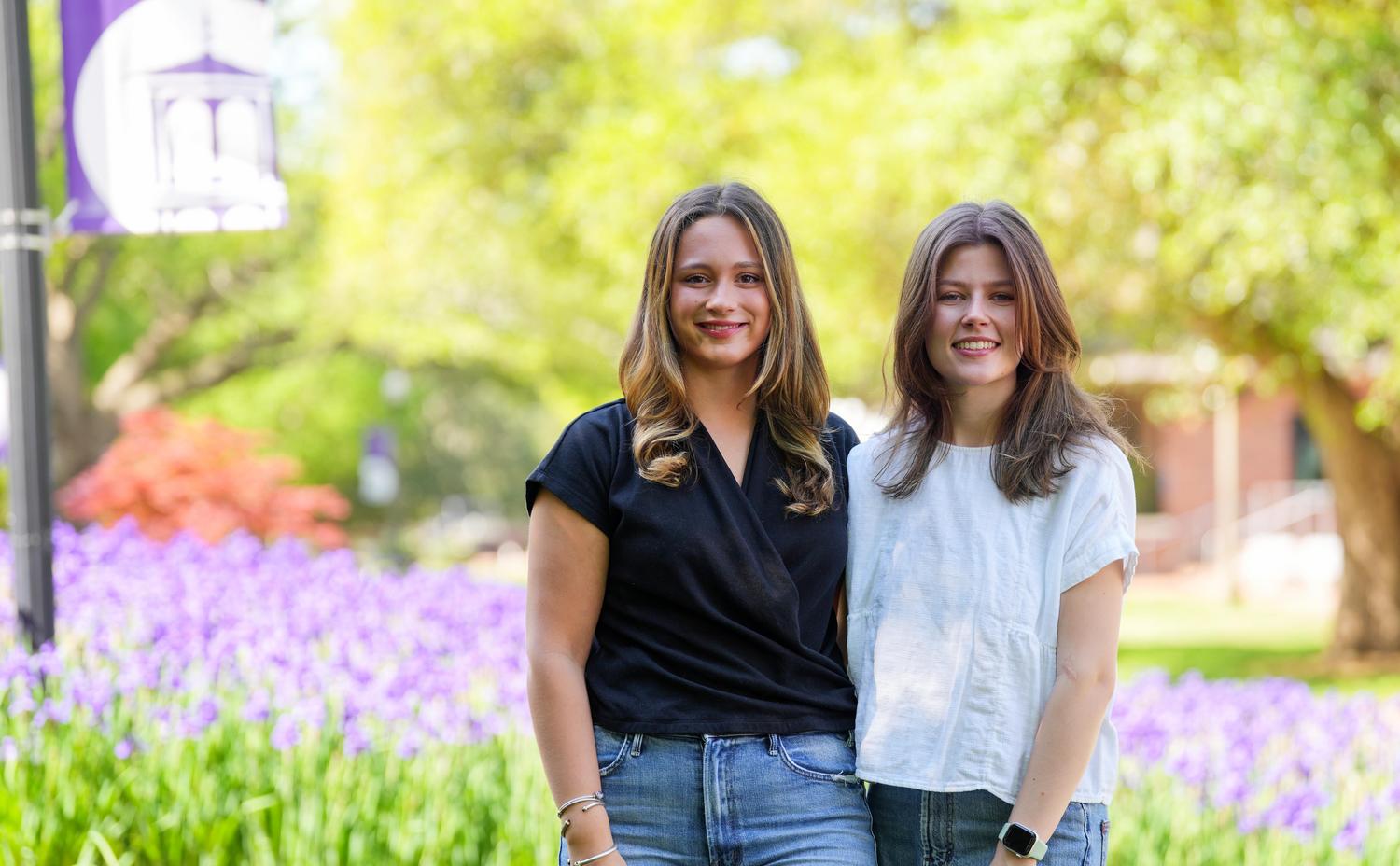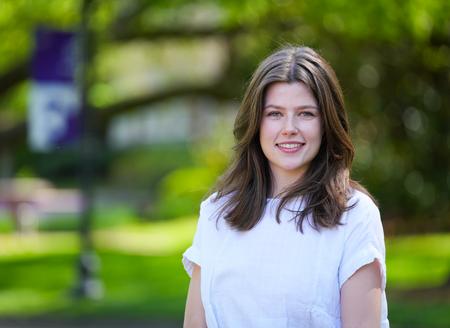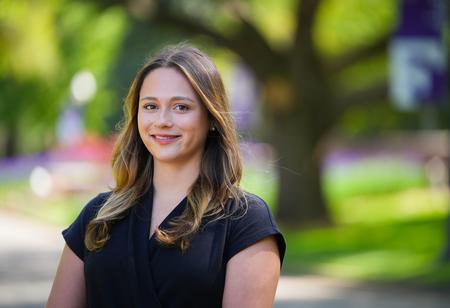Barker and Longsworth named Goldwater Scholars

The two newest Goldwater Scholars at Furman University hail originally from opposite shores and study disparate veins of chemistry, but both want to pursue research aimed at making the planet more sustainable.
Tilly Barker ’25 and Olivia Longsworth ’25 were awarded 2024 Goldwater Scholarships, which recognize top-performing students who demonstrate research aptitude and plan on research careers in selected STEM fields. Their awards bring Furman’s total to 32 Goldwater Scholars since the program was established in 1986; nine have been selected since 2019. Barker and Longsworth will each receive $7,500 toward tuition as part of the honor.

Tilly Barker ’25.
Barker, a double major in chemistry and applied mathematics, and minoring in data analytics, is originally from Guisborough, a town in North Yorkshire, England, but has lived in the states for nearly 10 years. She calls The Woodlands, Texas, home now.
In Chemistry Professor Paul Wagenknecht’s lab, Barker is working on developing a titanium-based molecule that can be used as a photocatalyst, a material capable of soaking up light.
“If we’re successful, this molecule will be able to absorb the energy of sunlight and turn it into usable fuels and, or, electricity,” Barker said.
Barker said titanium “represents an important area of research for mitigating climate change and avoiding the consumption of fossil fuels” because it’s abundant and relatively inexpensive compared to rare-earth metals commonly used in photocatalysis.

Olivia Longsworth ’25.
Longsworth ’25 was on an eight and a half-hour trek to her home in Memphis, Tennessee, when she got word of the award. Sharing the news en route with family made the trip much more enjoyable, she said. The chemistry and information technology double major works in Chemistry Professor George Shields’s lab where they use computer simulations to model reactions.
Already, Longsworth has published three papers with Shields. Her research focuses on the formation of secondary aerosols within the atmosphere.
“These reactions happen at different temperatures, pressures and settings within the atmosphere, and they’re very hard to measure experimentally,” she said. “And they also happen fast and in low concentrations. So, we can use math and physics and chemistry together to model these reactions in a computer. More broadly, my research looks at how these small reactions influence climate and weather and the scattering and absorbing of light and heat in the atmosphere.”
Like many Furman chemistry majors, Barker and Longsworth plan on pursuing advanced degrees after graduating.
Barker said that while she has enjoyed inorganic chemistry, she’s “on the fence” about whether she’ll take on a doctorate in chemistry or one in materials science.
Either way, she said, “I want to take inspiration from my work with Dr. Wagenknecht and follow research that aims to develop novel ways of sourcing and storing energy. I want to conduct research for protecting our planet and preserving it for future generations.”
Longsworth, who is on the pre-health track at Furman, is interested in a combined M.D.-Ph.D. program. She has a passion for rural health and wants to study how agricultural practices in rural areas “affect the health and well-being of farmers and the surrounding communities they serve. I think that’s a niche that’s not well-studied,” Longsworth said.
It’s an interest area propped up by her experience working on the Furman Farm where she helped run the hydroponic system and start seeds for spring, among other duties. “I think finding a research study to connect medicine and health and the communities that produce our food is really compelling,” she said.
Both Barker and Longsworth value the mentorship they’ve received at Furman.
“Dr. Wagenknecht is the reason I decided to pursue a Ph.D.,” Barker said. “Joining the ‘Wag Lab’ the summer after my freshman year was one the best decisions I’ve made throughout my Furman career. I would encourage any student considering joining a research lab to absolutely go for it, especially Dr. Wagenknecht’s lab.”
Longsworth is struck by Shields’s team-building sensibilities and noted that she stays in touch with fellow students from Shields’s lab who have gone on to graduate schools.
“I think for Furman’s size, the chemistry department is blessed to have the amount of funding and resources it has, and the small student-to-faculty ratio is the perfect scenario for hands-on undergraduate research,” Longsworth said. “All the focus is on the undergrads, and it’s awesome. It’s given me so many opportunities.”